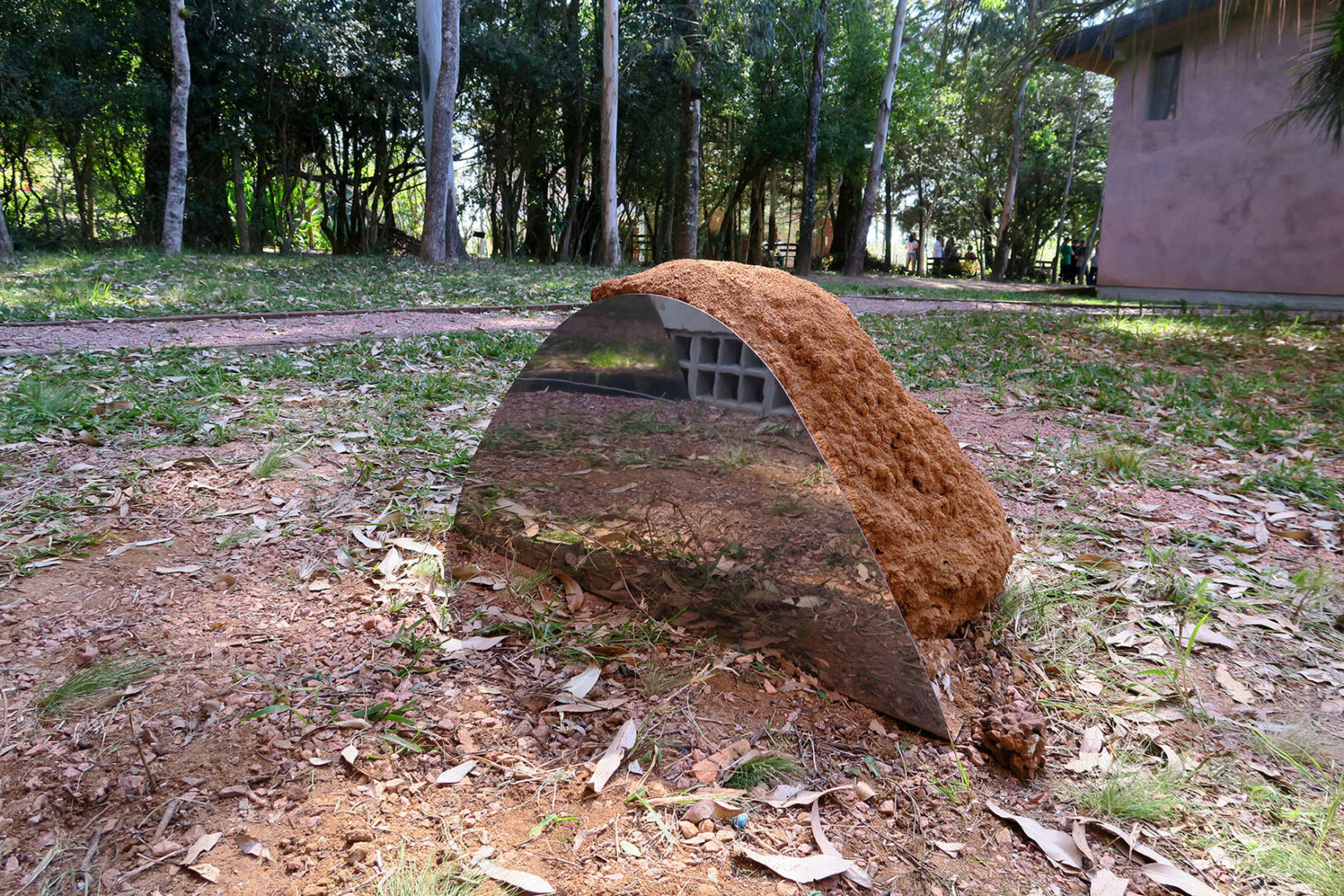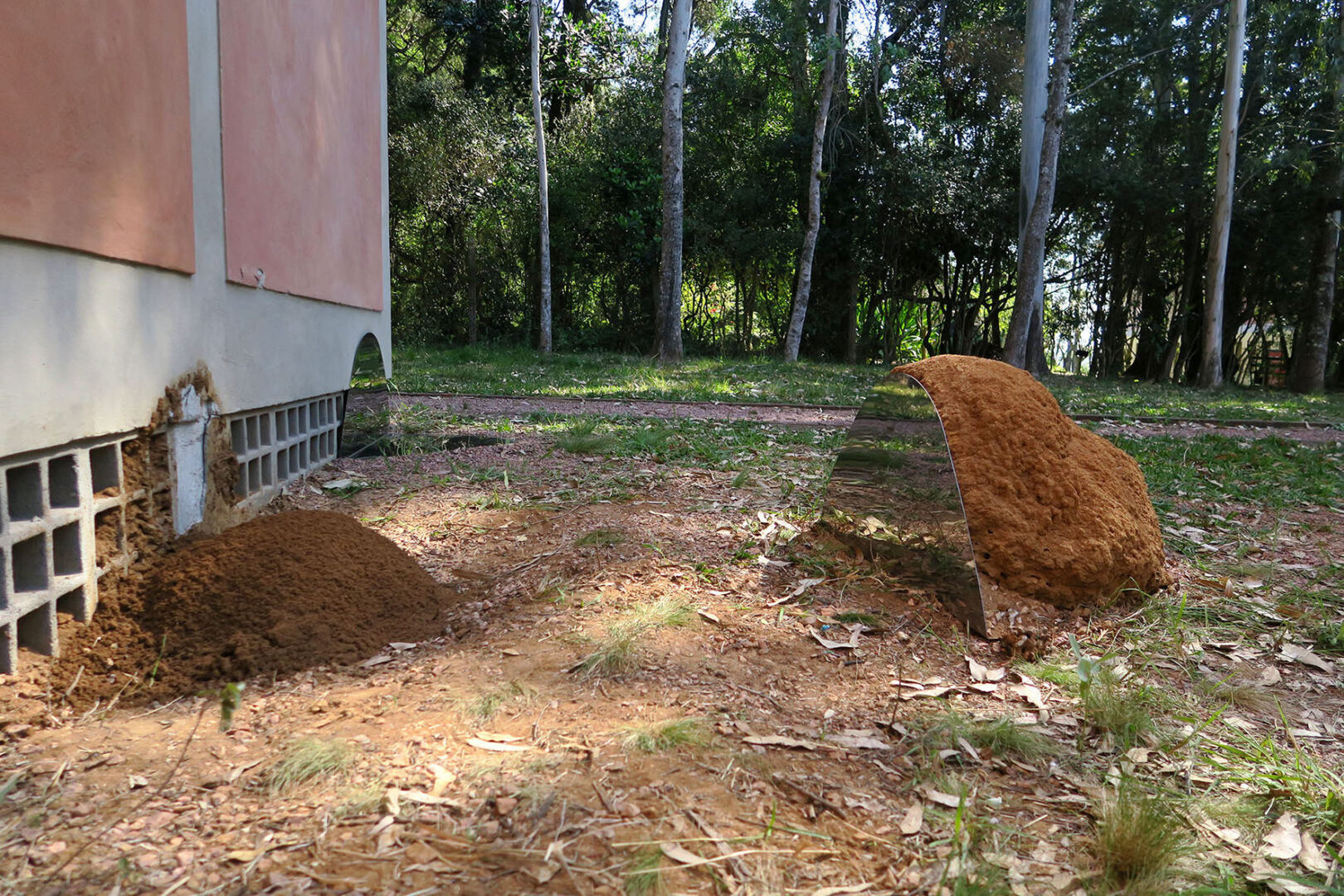DETOUR
Detour consists of an anthill’s displacement that developed at one of the FVCB foundation buildings, where the work was created. In addition to moving the anthill 1.5 meters from its original location, two identical drawings representing the anthill outline are cut in steel. One of these pieces serves as a foundation over which the anthill’s entire organic structure is moved. The second piece is on display next to the original location of the anthill. The drawings were made on polishing stainless steel, causing the mirrored surface to stand out as different from the landscape around it while at the same time camouflaging itself within the environment.
DETOUR Intervention and installation with stainless steel plates and anthill Size: 400x400cm (installation) and 55x45x90cm (each stainless steel piece) 2017
The shape of the anthill evoked a small mountain, a miniature mountain of sorts. However, unlike the form of hills or mountains, this was an alive, organic shape, inhabited and built by ants. Moving this structure would mean moving something to a place beyond physical form. It would mean transposing a complex system, possibly dislodging an ant colony. Although it may appear minimum in formal terms, moving the anthill 1.5 meters away from its original location would significantly interfere with that ecosystem.
During the assembly stage of the piece, we found that this was an overlapping of colonies: a termite mound had developed next to the building that housed the foundation’s collection. Next to the pile, other anthills coexisted within the structure. The entire structure on the surface was moved: the anthill mound was placed onto the stainless steel structure and then drove about 1.5 meters away from its original location.
Soon a formal and reflective relationship developed between the displaced anthill-mound on the metal structure and the space in the original location of the structure: a hole of sorts next to the remains of the mound attached to the building maintained a record of the removed structure’s absence left behind.
The other stainless steel piece, identical to the one used for displacing the anthill mound, was laid next to the removal vestiges. The two-dimensional shape is not so much a witness of the actions carried out as an index that points to the anthill mound’s original structure. Although the two forms are identical, the one used to replace the organic structure and the one displayed next to the anthill’s original location are different and opposing natures. The two-dimensional representation references the absence of the design, pointing at this absence as a visual account of the space around itself. The mirrored surface becomes a visible sink of sorts, moving us away from the displaced anthill’s organic and structural-structuring relationship.
The anthill activity continued and, very quickly, began the reconstruction of the visible structure above the surface. The void left behind by the removal was filled by a new structure, which appears to be a persistence of form (or a repetition of the same system that constitutes it). Two days after the installation of the work and the anthill mound’s displacement, a new anthill, with a height of approximately 20 cm, was created by the ants in the exact location.
The work was installed outside Fundação Vera Chaves Barcellos foundation in Viamão, Brazil, on the occasion of the Aã exhibition (from September 2 to December 16, 2017).
Thanks to Vera Chaves Barcellos Foundation, Ío (Laura Cattani and Munir Klamt), Adilson Tubin, and Balduino Alves.
Detour is part of the FVCB collection.



